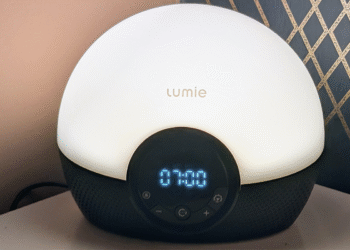
Your questions about bedside cribs answered
What is the best bedside crib?
Choosing a bedside crib you can rely on is crucial when it comes to those first months of your baby’s life. While practical factors such as cost and usability play their part, the right crib will also instil confidence and trust, allowing you to feel assured that your child is having a safe, comfortable sleep.
If you’re looking for an all-rounder that has ease of use at its core, Mamas & Papas Lua crib is a must-consider. Granted, it’s more expensive than other options on our list but if you can justify the spend, we think it’s worth it. Options such as the SnuzPod5 and the drift gliding crib make comforting your child from the comfort of your bed easier, while Clair De Lune’s beautiful sustainable-minded option is also worthy of special mention.
What is a bedside crib?
Bedside cribs – or co-sleeping cribs as they’re sometimes known – are designed to attach to your existing bed to allow you to effectively lie side by side with your baby. This gives you the closeness and convenience of sleeping next to your little one while minimising the risks associated with sharing a bed. Most will have a side panel that can be unzipped or unclipped and lowered, while others simply have a side with “give” that allows you to reach your newborn with ease. They should all convert to a standalone crib, which can be useful for both daytime naps and when baby is a few months old and starts sleeping longer at night.
What are the benefits of a bedside crib?
Firstly, they allow you to reach your baby without having to get out of bed so you can feed and comfort them quickly and easily – a godsend for those recovering from a c-section birth when your mobility can be limited. Look for designs that have a side panel that can be lowered for ultimate closeness and the easiest possible reach, but make sure that it can be raised or reattached to keep them safe.
Bedside cribs also boast a wealth of additional features that traditional Moses baskets don’t, including incline options to aid with reflux, soothing rocking mechanisms, handy shelves and pockets for toys and wipes, and many can be folded away into a bag for easy storage. And while babies can often outgrow their Moses baskets at around three or four months, bedside cribs tend to be wider and suitable for babies up to six months old or more, so you’ll get more use out of them.
They’re also super safe. In line with baby sleep guidelines, they allow your little one to have their own space, minimising the risk of suffocation, overheating, and SIDS (sudden infant death syndrome) that can be associated with co-sleeping.
What should I look for in a bedside crib?
For ultimate closeness and easiest possible reach, look for crib designs that have a side panel that can be lowered or removed when attached to your bed, but make sure that it can be raised or reattached again to keep them safe. Breathability of the fabric is also important – look for those that have mesh side panels you can see baby’s face through, and which will keep baby cool in the night, and the mattress should be firm, flat, and breathable.
Importantly, you’ll also need to make sure it fits with your bed – most designs will come with safety straps or a harness that allow you to attach it securely to your bed, but some bed frames can be trickier to work with. Also look for a crib that has a protective barrier around the sides so baby can’t roll from their bed into your own, and one that can be adjusted height-wise; it’s vital that your baby’s mattress sits flush or just a touch lower than yours.
You might also want to consider extra features that could be helpful, including an accompanying travel bag for easy storage, incline options (great for when baby has a cold or reflux), and shelves to keep bottles, wipes, and nappies nearby. Fancier models even come with in-built rockers, music, and night lights that prevent you from fumbling around in the dark!
Are bedside cribs safe?
Yes, they’re super safe. In line with baby sleep guidelines, they allow your little one to have their own space, minimising the risk of suffocation, overheating and SIDS (sudden infant death syndrome) that can be associated with co-sleeping.
Keep little one snug as a bug with the best baby blankets for your sleeping bundle









